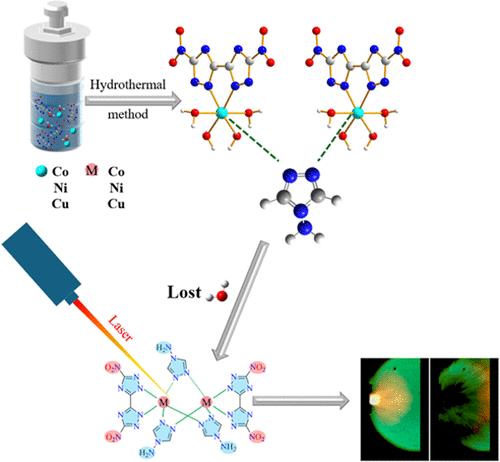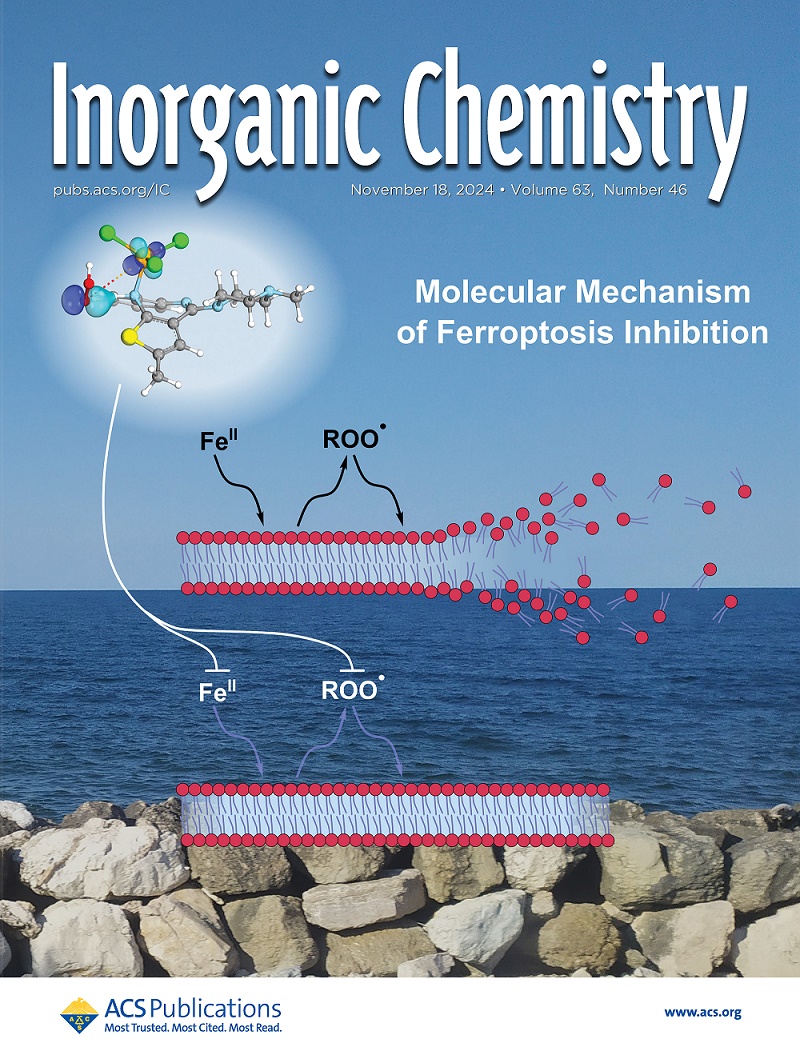Coordination Competition Strategy for Constructing High-Energy Photosensitive Complexes
IF 4.3
2区 化学
Q1 CHEMISTRY, INORGANIC & NUCLEAR
引用次数: 0
Abstract
High-dimensional energetic coordination compounds (ECCs) exhibit high stability and low sensitivity owing to their complex network structure, making them valuable in functional energetic materials such as combustion catalysis and insensitive detonating explosives. Four ECCs, [Co(DNBT)(H2O)4]n (ECC-1), [Ni(DNBT)(H2O)4] (ECC-2), [Cu2(DNBT)2(H2O)3MeOH] (ECC-3), and [Zn(DNBT)(H2O)4] (ECC-4), were synthesized by modifying the metal centers and using 5,5′-dinitro-4H,4’H-3,3′-bi(1,2,4-triazole) (DNBT) as ligands. After changing the solution environment and adding the auxiliary ligand 4H-1,2,4-triazol-4-amine (4-ATr), we obtained three ECCs with similar coordination structures once again: [Co2(DNBT)2(4-ATr)3(H2O)2] (ECC-5), [Ni2(DNBT)2(4-ATr)3(H2O)2] (ECC-6), and [Cu2(DNBT)2(4-ATr)3] (ECC-7). ECCs with fewer water molecules were chosen for laser ignition and detonation tests to evaluate their laser-induced ignition and detonation capabilities, indicating potential applications as laser initiators. The laser response behavior differs between [Co2(DNBT)2(4-ATr)3(H2O)2] and [Cu2(DNBT)2(4-ATr)3]. [Cu2(DNBT)2(4-ATr)3] exhibits excellent laser response, with a low minimum laser initiation energy of 11 mJ and a short lengthy ignition delay of 2.31 ms, whereas [Co2(DNBT)2(4-ATr)3(H2O)2] is less sensitive under the same conditions. Theoretical calculations and tests at different laser power densities indicate that [Co2(DNBT)2(4-ATr)3(H2O)2] possesses more efficient photothermal conversion. This reduced sensitivity to laser response may stem from the presence of water. The charge transfer behavior between these compounds is thoroughly analyzed through theoretical and structural studies.

求助全文
约1分钟内获得全文
求助全文
来源期刊

Inorganic Chemistry
化学-无机化学与核化学
CiteScore
7.60
自引率
13.00%
发文量
1960
审稿时长
1.9 months
期刊介绍:
Inorganic Chemistry publishes fundamental studies in all phases of inorganic chemistry. Coverage includes experimental and theoretical reports on quantitative studies of structure and thermodynamics, kinetics, mechanisms of inorganic reactions, bioinorganic chemistry, and relevant aspects of organometallic chemistry, solid-state phenomena, and chemical bonding theory. Emphasis is placed on the synthesis, structure, thermodynamics, reactivity, spectroscopy, and bonding properties of significant new and known compounds.
 求助内容:
求助内容: 应助结果提醒方式:
应助结果提醒方式:


